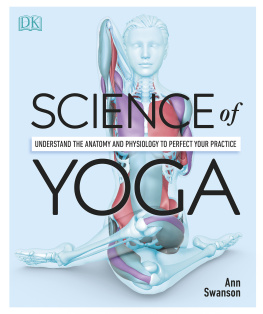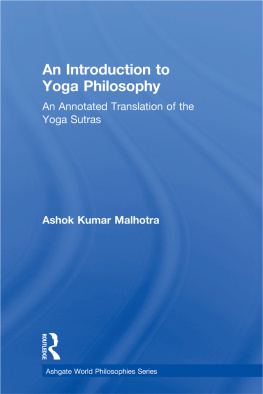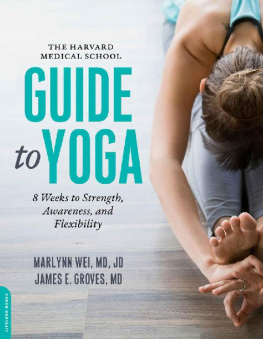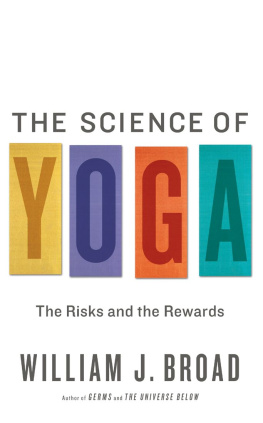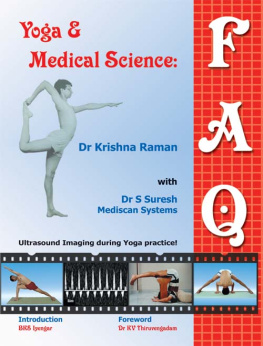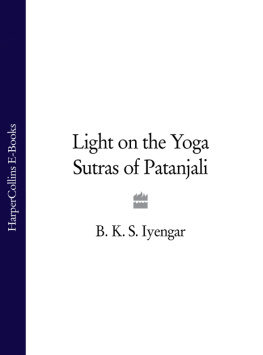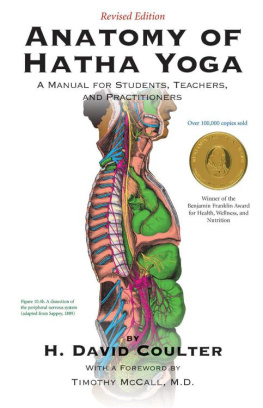WHAT OTHERS HAVE SAID THROUGHOUT THE CENTURIES, ALL OF WHICH I HOLD TO BE TRUE AND RELEVANT TO YOGASANA PRACTICE TODAY
There is nothing
equal to knowledge.
Bhagavad Gita 4.38
To attain knowledge,
add things every day.
To attain Wisdom,
subtract things.
Lao Tzu, 604-631 BC
Lack of knowledge is the source
of all pains and sorrows whether dormant,
attenuated, interrupted or fully active.
Patanjali; Yoga Sutra II.4, 200-500 BC
It is not because things are difficult
that we do not dare;
It is because we do not dare
that they are difficult.
Seneca, 4 BC-65 AD
The mind is not a vessel to be filled,
but a fire to be kindled.
Plutarch, 46-120 AD
It is not enough for you to believe
what you see;
you must also understand
what you see.
Leonardo Da Vinci, 1452-1519
Do not wish to be anything
but what you are,
and try to be that perfectly.
St. Frances de Sales, 1567-1622
The trouble with Western man
is he does not know how to be content
in an empty room.
Blaise Pascal, 1623-1662
Imagination is the real and eternal world
of which this vegetable universe
is but a faint shadow.
William Blake, 1757-1827
Believe those who are seeking truth.
Doubt those who find it.
Andre Gide, 1869-1951
I am always doing what I cannot do,
in order that I may learn how to do it.
Pablo Picasso, 1881-1973
The isness of things
is well worth studying;
but it is the whyness
that makes life worth living.
William Beebe, 1877-1962
Research is to see
what everybody has seen,
and to think
what nobody else has thought.
Albert Szent-Gyorgyi, 1893-1986
An expert is a person who has made
all the mistakes that can be made
in a very narrrow feild.
Niels Bohr, 1885-1962
Truth is what passes
the test of experience
Albert Einstein, 1879-1955
In theory,
there is no difference
between theory and practice.
But in practice,
there is.
Yogi Berra, 1925-2015
I cant understand why people are
frightened of new ideas.
Im frightened of the old ones.
John Cage, 1912-1992
Science unleavened by the human heart
and the human spirit is sterile,
cold and self-absorbed.
Gregory Petsko, 2010 .
When I practice, I am a philosopher;
When I teach, I am a scientist;
When I demonstrate, I am an artist.
B. K. S. Iyengar, 1920-2015.
If the brain were so simple
that we could understand it,
we would be so simple
that we couldnt!
Lucky numbers 55, 12, 47, 28, 44, 50.
Fortune cookie,
Imperial Wok Restaurant,
Shreveport, LA, August 27, 2012.
This display is continued in {}. I would recommend that the reader peruse this list, finds that one simple statement that summarizes their point of view in regard to yogasana practice, and then keeps this in mind as they climb the yoga ladder. Though I recognize the truth within each of the statements above, for me, the focus for the last few decades has been on the statement offered above by William Beebe.
Having read about the Bacchanalia and Saturnalia Festivals of ancient-Roman times, the first of which centered about the holiday-celebration of Bacchus, the Greco-Roman God of wine, freedom, intoxication, and ecstasy, and the second of which centered on partying in a carnival atmosphere, with significant role-reversal among the party-goers, I have been led to propose a modern-day Yogasanalia in which we again come together in celebration of the many seemingly different aspects of yoga, medicine, and science. This conjunction is both timely and important because these fields have been rather minimally interactive, or even noninteractive in the past centuries, but to which I believe we all are now far more open and receptive. In an effort to promote such a coming-together of otherwise disparate topics, themes, theories, attitudes, understandings, misunderstandings, points-of-view, etc., I have tried to establish a basis for mutual cooperation and mutual benefit by inviting East and West, medicine, science, and yogasana practice to the celebration, with each having full access to telling its story in terms that the others can understand, and from which we all can learn. Though it is still very incomplete, this coming-together of such very different ways of thinking and acting hopefully will add to the enjoyment that each of us experiences while working/playing in our own little-but-special area of yogasana or medical-science practice. Moreover, the more incompatible are the subjects being discussed, the more our imagination is being stirred into action!
The enclosed is my personal offering to what I hope will be enjoyed by all who will take the chance to come to such a party; there will be many at the Yogasanalia celebration whom you do not recognize, but all who come do so with the hope of making new friends, and we all have something more-or-less unique to bring to the party!
As discussed below in the {}, below, and in more explicit terms in the remainder of the e-Handbook text, Chapters 1-to-25, and Appendices I-to-VII.
It has been my early experience as a solo yoga beginner that performing a yogasana opens the door to many sensations and feelings, some pleasant and some painful, but with little understanding as to which were appropriate to the practice, and which should have been avoided. Only after working with several Iyengar teachers was there some light shed on which sensations to encourage and which to discourage. I find that this initial lack of direction also appears for me when writing a book about yogasanas and Western medicine! The field is ripe for many new ideas; however, in the beginning, one has no firm understanding of which ideas are sensible and which are nonsense, and so one must turn to dispassionate but experienced observers on the outside for critical input. It is for this reason that I am pleased to acknowledge that this e-Handbook has been road tested by several yogasana-teacher friends who were willing to read the text and give feedback on what needed to be changed.
I am especially happy to acknowledge Susan Ahlstrom, Eliza Childs, Mary Dalziel, Karin Eisen, Sandy Gatto, Katja Huiras, Ellen Kiley, Caitlin Swartley, Karen Wachsmuth, and Carol Wipf for their valuable help in this important aspect of putting the initial and present versions of the e-Handbook together. Special thanks go to William Egbert, who was so generous with his time in regard to {} in the Handbooks second edition, and to Diana Treglia for information/clarification regarding the autonomic nervous system. Similarly, I am indebted to Wendy Rasmussen, Royane Mosley, and Nancy Barr for their skill and patience in regard to drawing and redrawing many of the Figures, and to artist Lexi Schnabel, who color-tinted several of the drawings. The mandala decorating the front cover of this e-Handbook is the artwork of Nancy Lee Schnabel, who generously donated it to this project. In addition, Nancy has been unflagging in her support of the many technical problems I have had to face in putting this e-Handbook together, and for that I am exceedingly grateful. A significant portion of the Photoshop artwork in this e-Handbook is that of Megan Herman, to whom I am deeply indebted for her positive spirit and artful touch when working endlessly on the more-than-300 Figures in the e-Handbook!
My deepest thanks to Nicole Bordeleau, Karin Eisen, Loren Fishman, Richard Jonas, Rajvi Mehta, Richard Rosen, Theresa Rowland, Ellen Saltonstall, Denise Thibault, Diana Treglia, and Lucienne Vidah, all of whom worked so hard to bring earlier versions of this work to the attention of others in the yoga community and/or who read pre-publication copies of this work and offered many helpful comments. Thanks as well to those who wrote critical reviews for the earlier paperback versions of the





